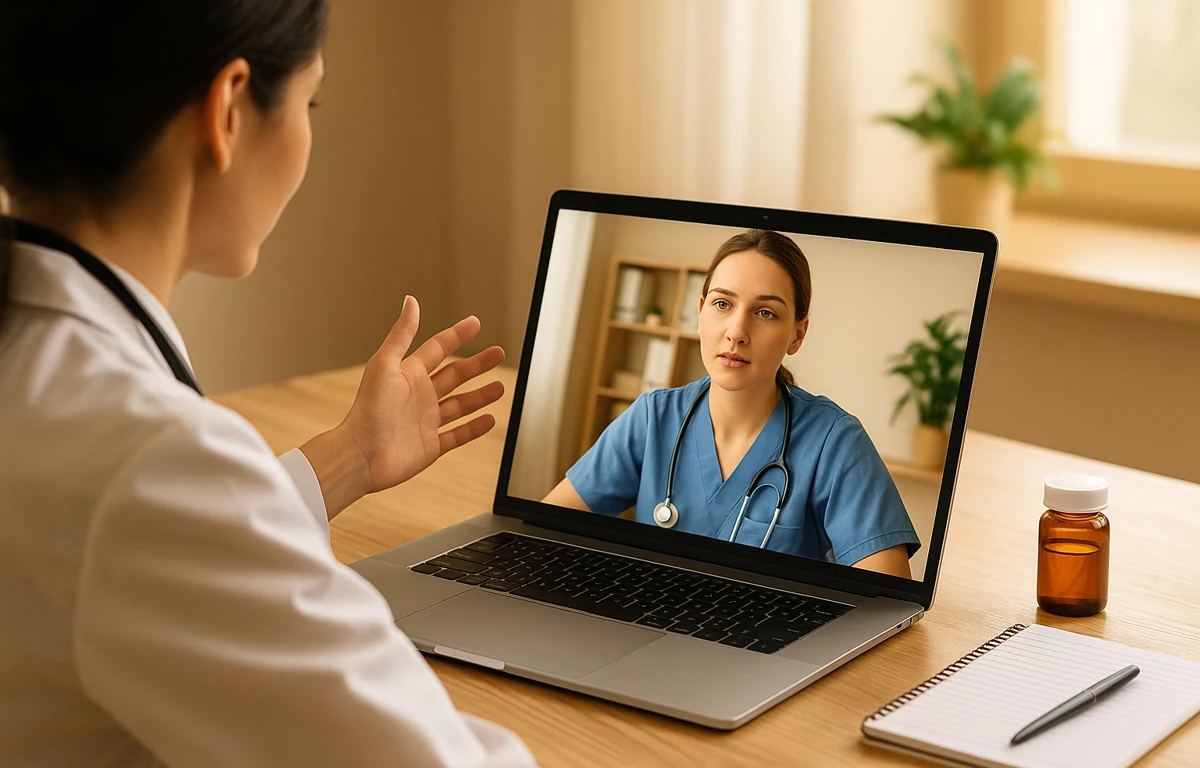Telemedicine is no longer the future — it is the present. In 2025, more and more people are consulting doctors online, receiving prescriptions, undergoing tests, and even being treated remotely. Digital technologies have made it possible to get medical care without leaving home, which is especially convenient in the fast pace of modern life.
What Is Telemedicine
Telemedicine is a form of medical service in which the patient and doctor communicate remotely via video call, chat, or specialized platform. This format includes consultations, treatment monitoring, issuing electronic prescriptions, and even psychological support. Modern technologies allow examinations to be conducted using mobile devices and wearable sensors that transmit data to the doctor in real time.
Benefits of Telemedicine
- Accessibility. Online consultations allow people to receive help regardless of location or schedule.
- Time saving. No need to spend hours traveling or waiting in lines — a few clicks are enough.
- Safety. During seasonal epidemics, it reduces the risk of infection in clinics.
- Continuity of care. Patients can stay under medical supervision even while traveling or on vacation.
- Convenience. All data, prescriptions, and recommendations are stored in your personal online account.
When Telemedicine Is Appropriate
Online consultations are suitable for most non-urgent cases — colds, allergies, skin conditions, test result discussions, or follow-up visits. However, in cases of severe pain, bleeding, or loss of consciousness, immediate in-person medical care is needed. Doctors emphasize: telemedicine complements traditional care but does not replace it.
How to Prepare for an Online Consultation
- Prepare a brief description of symptoms and when they appeared.
- Have test results or photos of affected areas ready in advance.
- Check your internet connection and camera before the appointment.
- Find a quiet place where no one will disturb you.
- Write down the questions you want to ask so you don’t forget anything.
Telemedicine in 2025
In 2025, telemedicine has become a global standard for medical access. Both public and private services around the world now allow patients to consult specialists in minutes. Video calls, mobile apps, and wearable devices that transmit blood pressure, pulse, or oxygen levels directly to doctors are becoming common. Most platforms comply with international data protection standards, storing medical information in encrypted form. Telemedicine is also increasingly integrated into insurance programs, making online consultations more accessible worldwide.
How to Choose a Reliable Platform
Before booking an online appointment, pay attention to several key points:
- The platform should be officially registered or partnered with licensed clinics.
- Check the doctors’ qualifications and real user reviews.
- Review the privacy policy and data protection standards.
- Transparent pricing is a good sign — trustworthy services always display consultation costs upfront.
The Future of Telemedicine
Experts predict that by 2025–2026, telemedicine will become even more personalized. Artificial intelligence integration will help doctors analyze results faster and provide patients with more precise recommendations. “Virtual clinics” are emerging, offering complete care — from consultation to diagnosis, prescriptions, and follow-up — without physical visits.
Doctors’ Advice
Doctors recommend treating telemedicine as a tool for long-term self-care, not as a quick fix. Choose reliable services, be honest about your symptoms, and don’t delay seeking help. Even a remote consultation can prevent complications.
Questions and Answers
Can I get a prescription online? Yes, if the doctor is confident in the diagnosis, an electronic prescription valid in most countries can be issued.
Is it safe to share medical data? Yes, modern telemedicine platforms use multi-layer encryption and strict privacy standards.
Can an online appointment replace an in-person visit? Partly. For prevention, mild illnesses, or treatment follow-ups — yes; for serious conditions — an in-person exam is required.
Conclusion
Telemedicine in 2025 represents comfort, accessibility, and a new level of health care. It bridges the gap between doctor and patient, making healthcare closer and more effective. The key is to use it wisely, choose trusted platforms, and take care of yourself every day.

